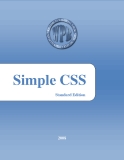Tài liệu Thư viện số
- Giáo trình SPKT (418 )
- Luận văn, luận án (2865 )
- Đồ án, khóa luận tốt nghiệp (9644 )
- Tài liệu tham khảo (1350 )
- BC nghiên cứu khoa học (1589 )
- Kỷ yếu hội thảo (12 )
- Tạp chí khoa học (62 )
- Luật (349 )
- Cơ khí chế tạo máy (2344 )
- Điện - Điện tử (4378 )
- Cơ khí động lực (1242 )
- Xây dựng - Kiến trúc (3233 )
- Thực phẩm, Môi trường (1087 )
- Công nghệ thông tin (3074 )
- Kinh tế - Quản lý (4140 )
- In - Truyền thông (383 )
- CN May - thời trang (832 )
- Nghệ thuật - Ẩm thực (1516 )
- Nông - Lâm - Ngư Nghiệp (763 )
- Y học - Sức khỏe (620 )
- Khoa học xã hội (3535 )
- Lịch sử - Địa lý - Du lịch (492 )
- Khoa học tự nhiên (2112 )
- Văn học (2585 )
- Ngôn ngữ (4289 )
- Khoa học ứng dụng (408 )
- Thông tin Tuyển sinh (61 )
- Thông tin -Thư viện (418 )
- Thể loại khác (1376 )
Danh mục TaiLieu.VN
- Mẫu Slide Powerpoint
- Kinh Doanh Marketing (39320)
- Kinh Tế - Quản Lý (30571)
- Biểu Mẫu - Văn Bản (123435)
- Tài Chính - Ngân Hàng (23744)
- Công Nghệ Thông Tin (56521)
- Tiếng Anh - Ngoại Ngữ (9738)
- Kỹ Thuật - Công Nghệ (44193)
- Khoa Học Tự Nhiên (27343)
- Khoa Học Xã Hội (43227)
- Luật - Kinh tế luật (6560)
- Văn Hoá - Thể thao - Du Lịch (71283)
- Y - Dược - Sức Khoẻ (83234)
- Nông - Lâm - Thuỷ sản (16418)
- Luận Văn - Báo Cáo (217024)
- Tài Liệu Phổ Thông (244133)
- Trắc Nghiệm Online (213578)
- Trắc Nghiệm MBTI
- Trắc Nghiệm Holland
Computer Organization and Design
Computer Organization and Design, Fifth Edition, is the latest update to the classic introduction to computer organization. The text now contains new examples and material highlighting the emergence of mobile computing and the cloud. It explores this generational change with updated content featuring tablet computers, cloud infrastructure, and the ARM (mobile computing devices) and x86 (cloud computing) architectures. The book uses a MIPS processor core to present the fundamentals of hardware technologies, assembly language, computer arithmetic, pipelining, memory hierarchies and I/O.Because an understanding of modern hardware is essential to achieving good performance and energy efficiency, this edition adds a new concrete example, Going Faster, used throughout the text to demonstrate extremely effective optimization techniques. There is also a new discussion of the Eight Great Ideas of computer architecture. Parallelism is examined in depth with examples and content highlighting parallel hardware and software topics. The book features the Intel Core i7, ARM Cortex A8 and NVIDIA Fermi GPU as real world examples, along with a full set of updated and improved exercises.
This new edition is an ideal resource for professional digital system designers, programmers, application developers, and system software developers. It will also be of interest to undergraduate students in Computer Science, Computer Engineering and Electrical Engineering courses in Computer Organization, Computer Design, ranging from Sophomore required courses to Senior Electives.
Winner of a 2014 Texty Award from the Text and Academic Authors Association
Includes new examples, exercises, and material highlighting the emergence of mobile computing and the cloud
Covers parallelism in depth with examples and content highlighting parallel hardware and software topics
Features the Intel Core i7, ARM Cortex A8 and NVIDIA Fermi GPU as real world examples throughout the book
Adds a new concrete example, "Going Faster," to demonstrate how understanding hardware can inspire software optimizations that improve performance by 200 times
Discusses and highlights the "Eight Great Ideas" of computer architecture: Performance via Parallelism; Performance via Pipelining; Performance via Prediction; Design for Moore's Law; Hierarchy of Memories; Abstraction to Simplify Design; Make the Common Case Fast; and Dependability via Redundancy
Includes a full set of updated and improved exercises
This new edition is an ideal resource for professional digital system designers, programmers, application developers, and system software developers. It will also be of interest to undergraduate students in Computer Science, Computer Engineering and Electrical Engineering courses in Computer Organization, Computer Design, ranging from Sophomore required courses to Senior Electives.
Winner of a 2014 Texty Award from the Text and Academic Authors Association
Includes new examples, exercises, and material highlighting the emergence of mobile computing and the cloud
Covers parallelism in depth with examples and content highlighting parallel hardware and software topics
Features the Intel Core i7, ARM Cortex A8 and NVIDIA Fermi GPU as real world examples throughout the book
Adds a new concrete example, "Going Faster," to demonstrate how understanding hardware can inspire software optimizations that improve performance by 200 times
Discusses and highlights the "Eight Great Ideas" of computer architecture: Performance via Parallelism; Performance via Pipelining; Performance via Prediction; Design for Moore's Law; Hierarchy of Memories; Abstraction to Simplify Design; Make the Common Case Fast; and Dependability via Redundancy
Includes a full set of updated and improved exercises
Từ khóa: Computer Organization and Design, David A.Patterson, John L.Hennessy
9 p ovanke 09/11/2019 811 4
Bạn đang xem trang mẫu tài liệu này.







